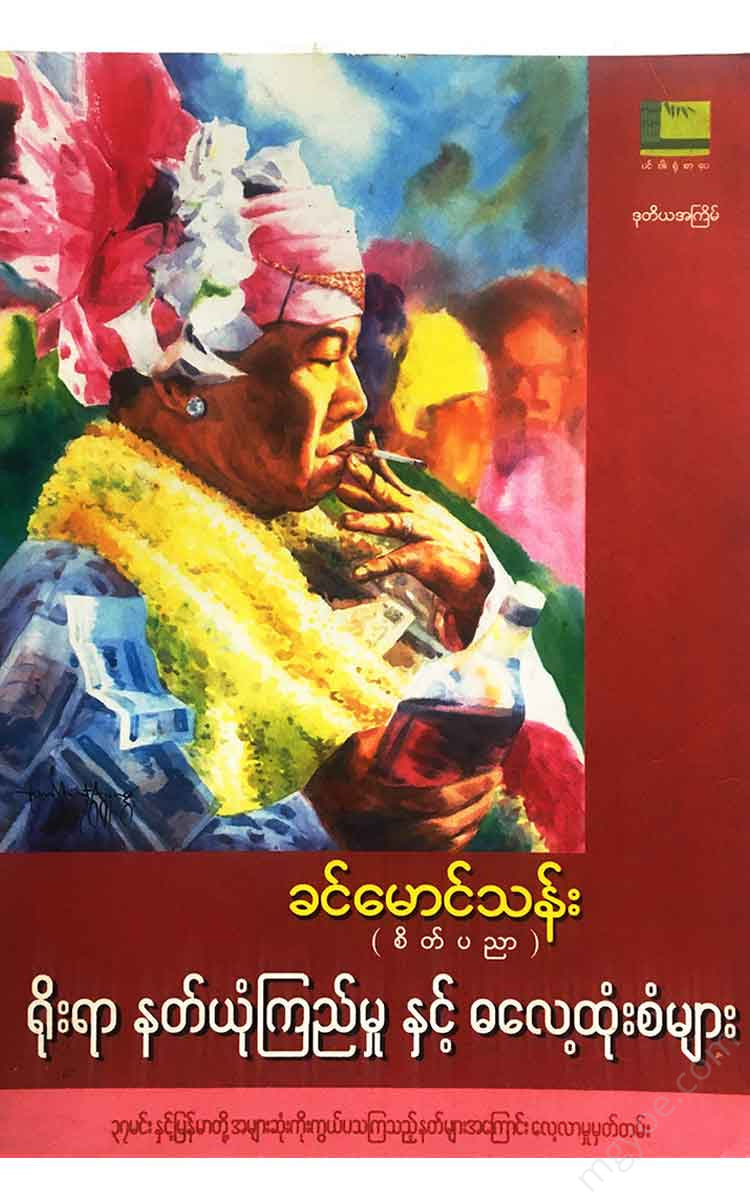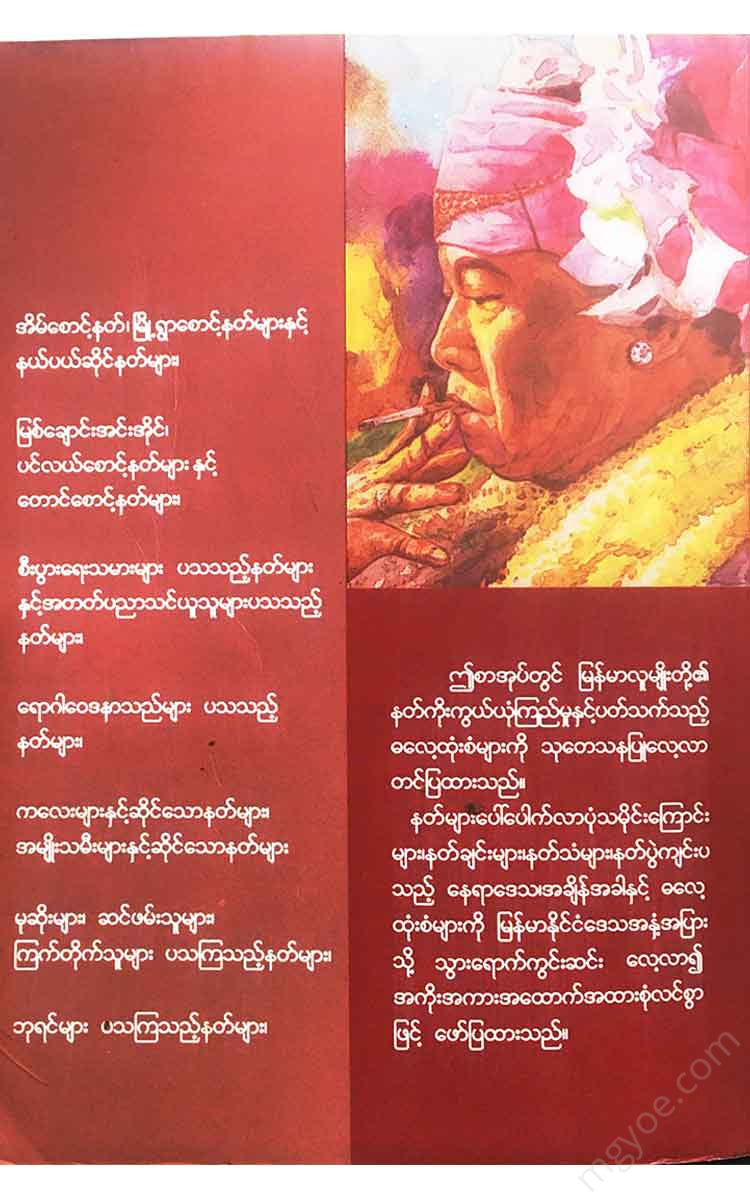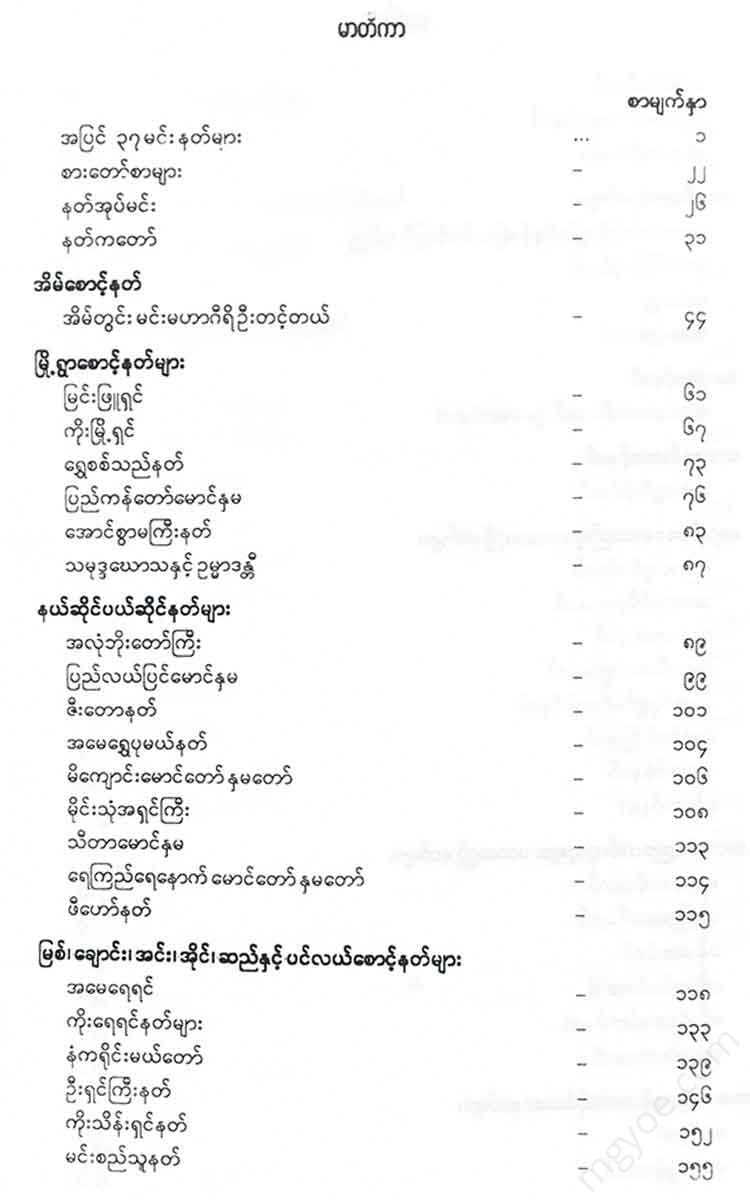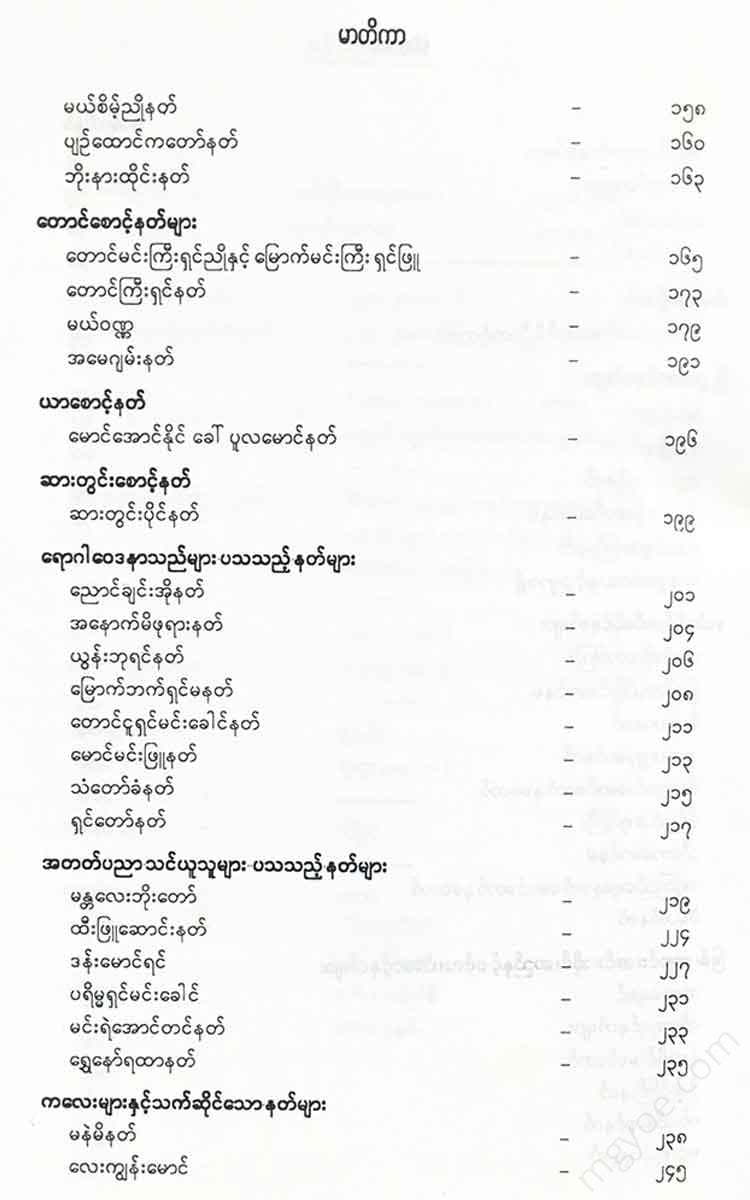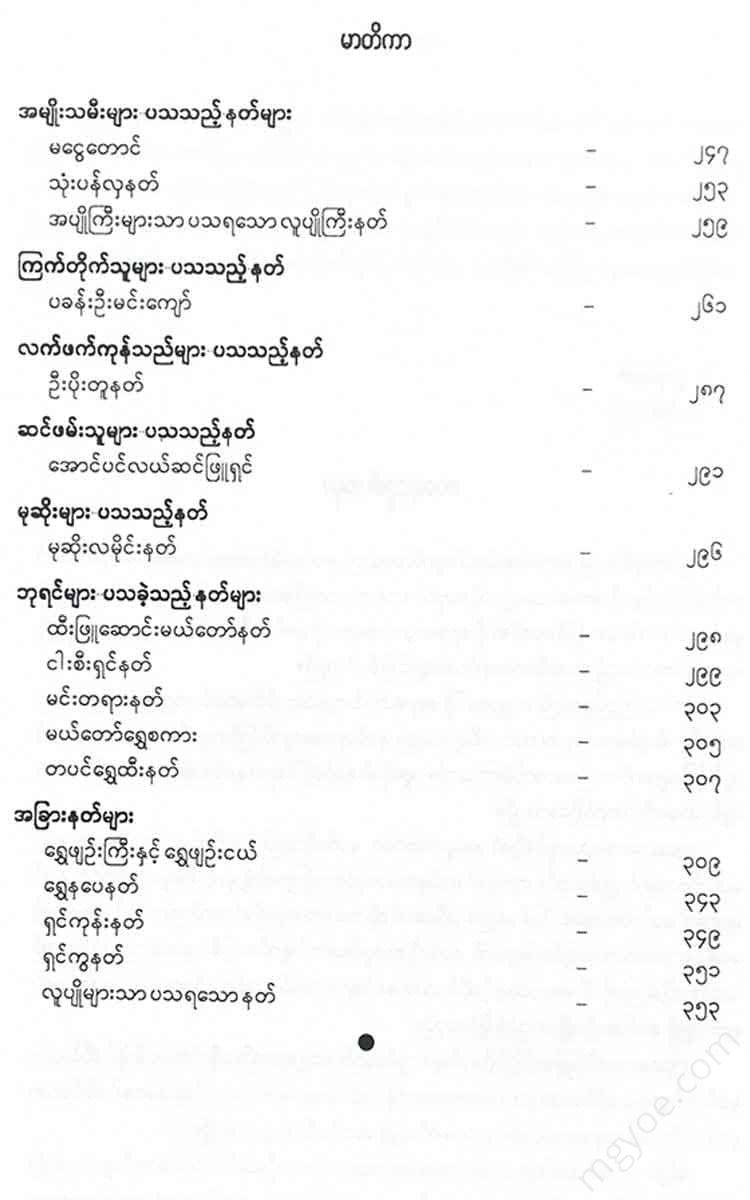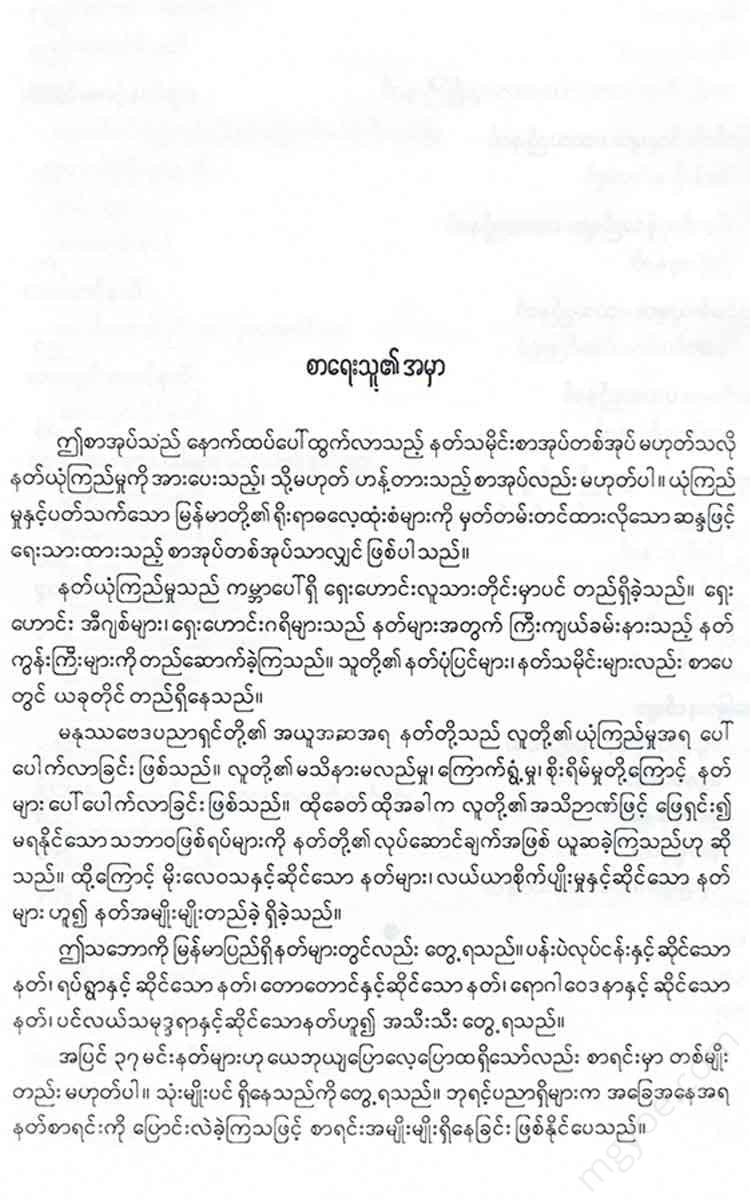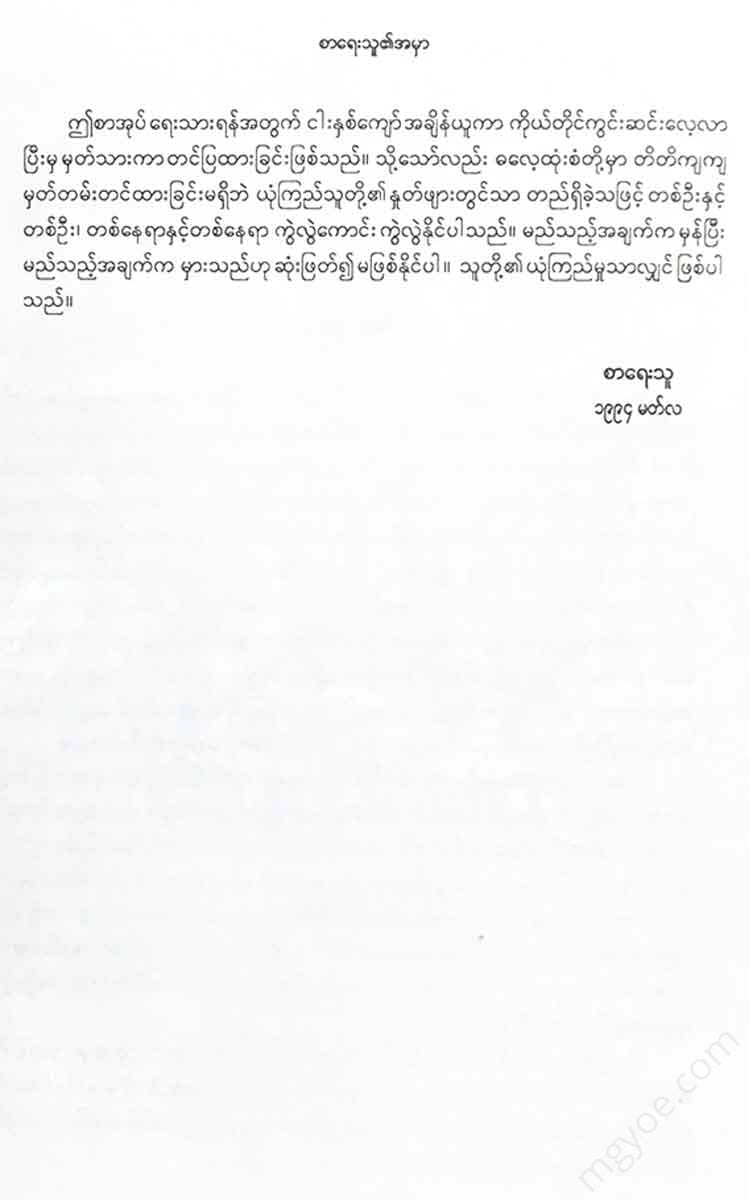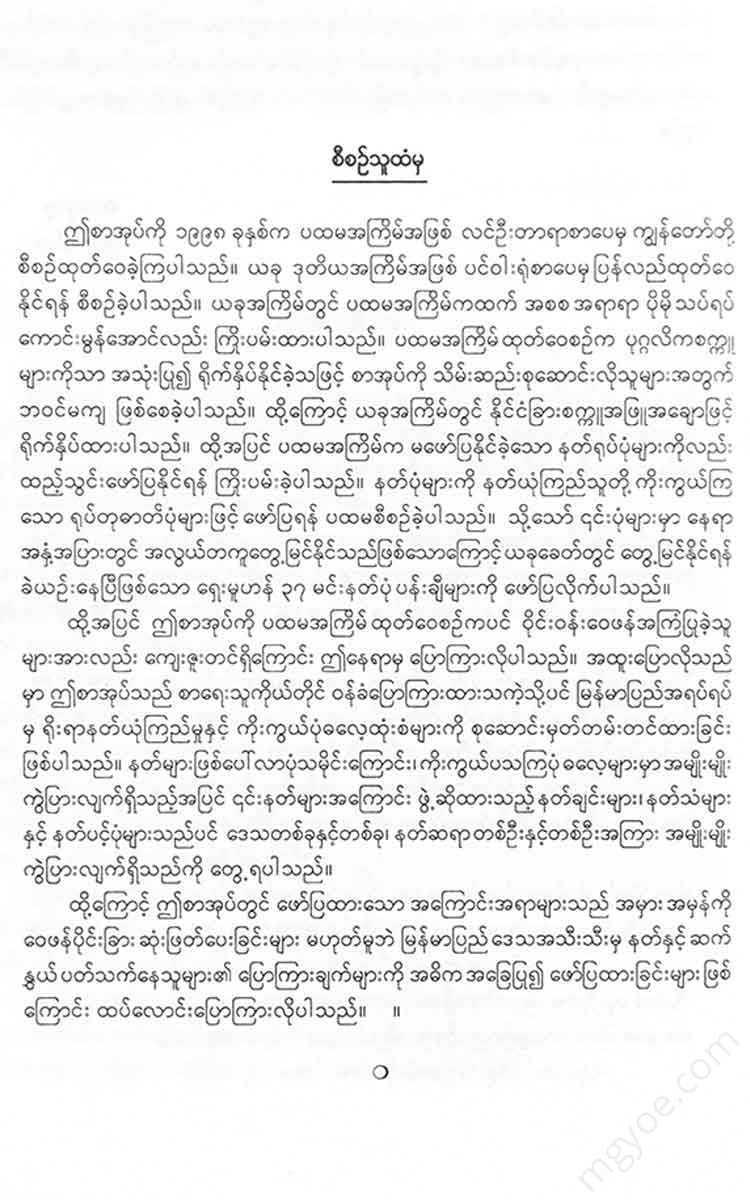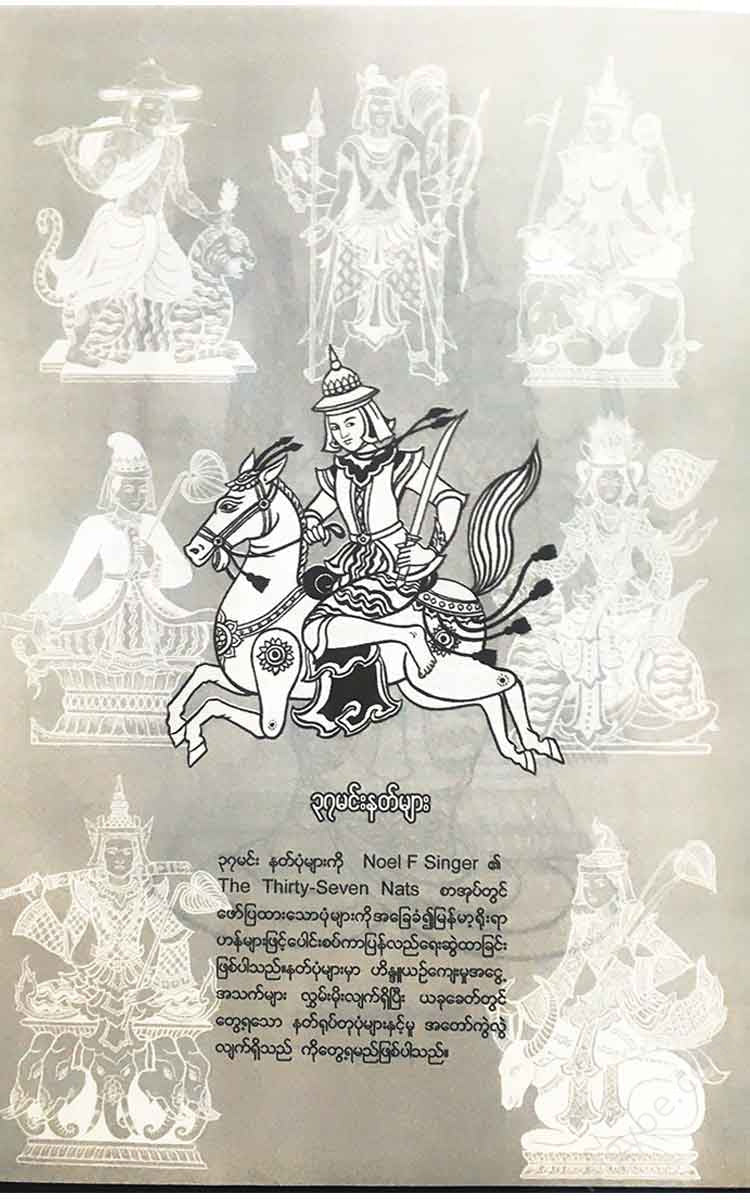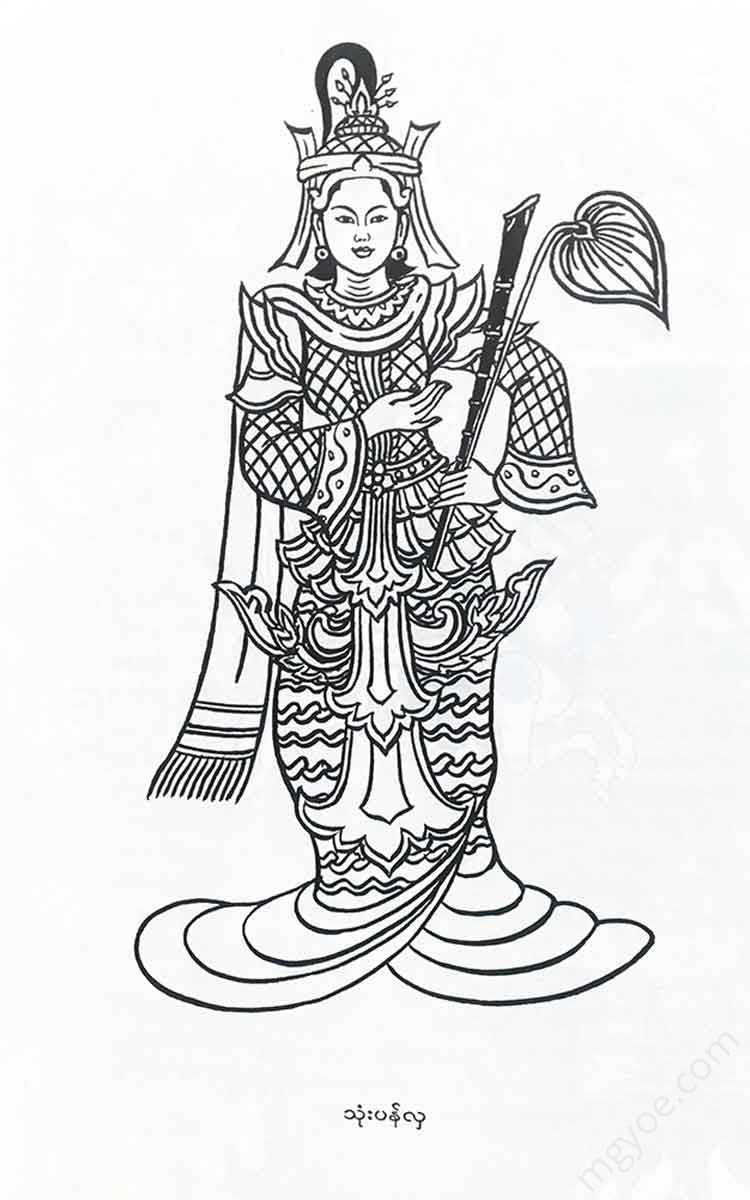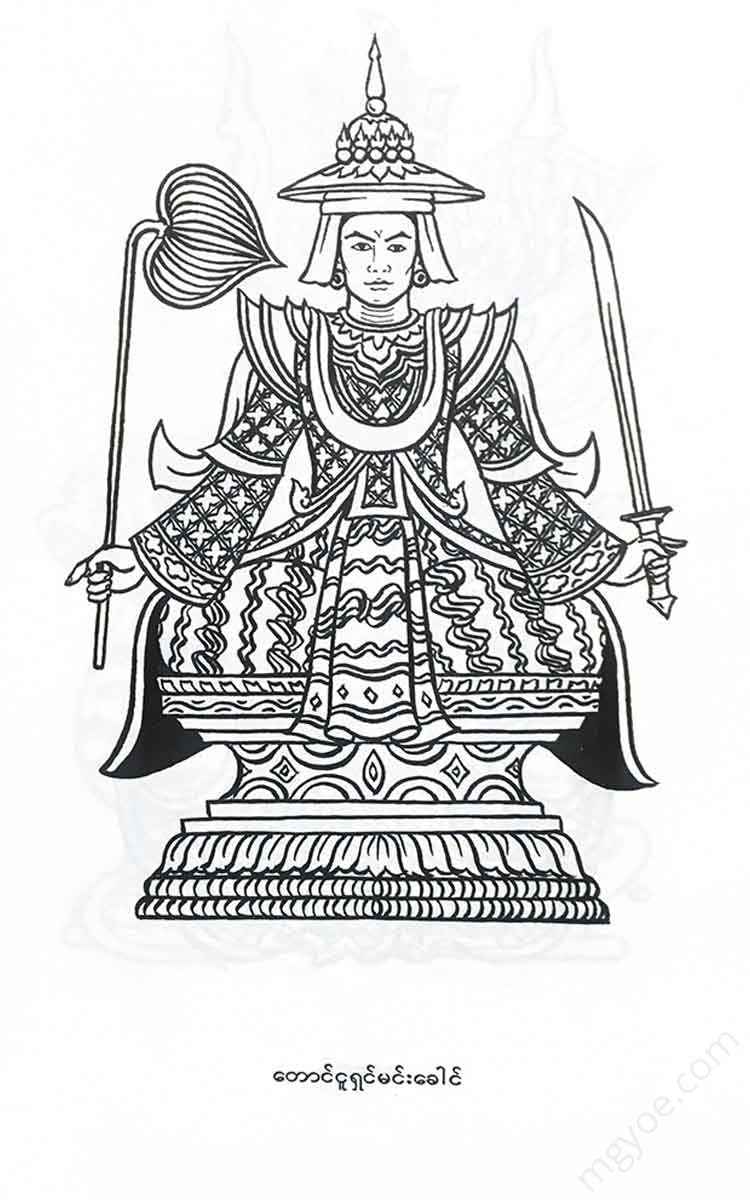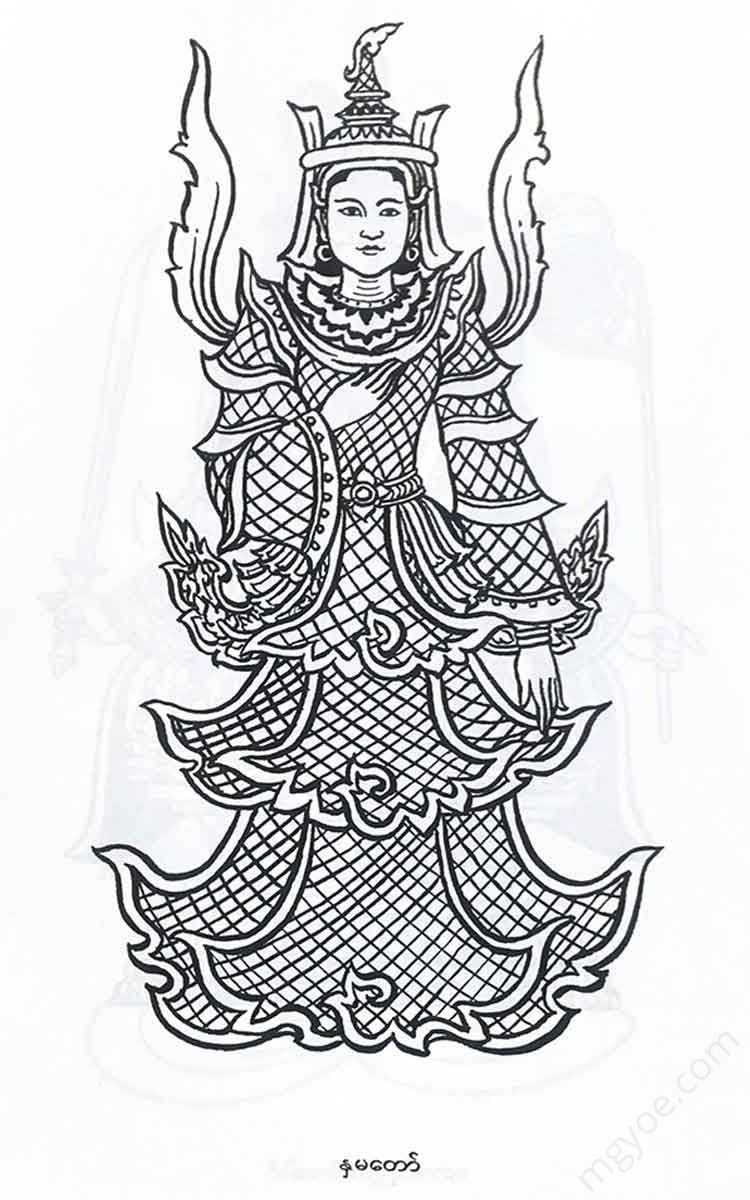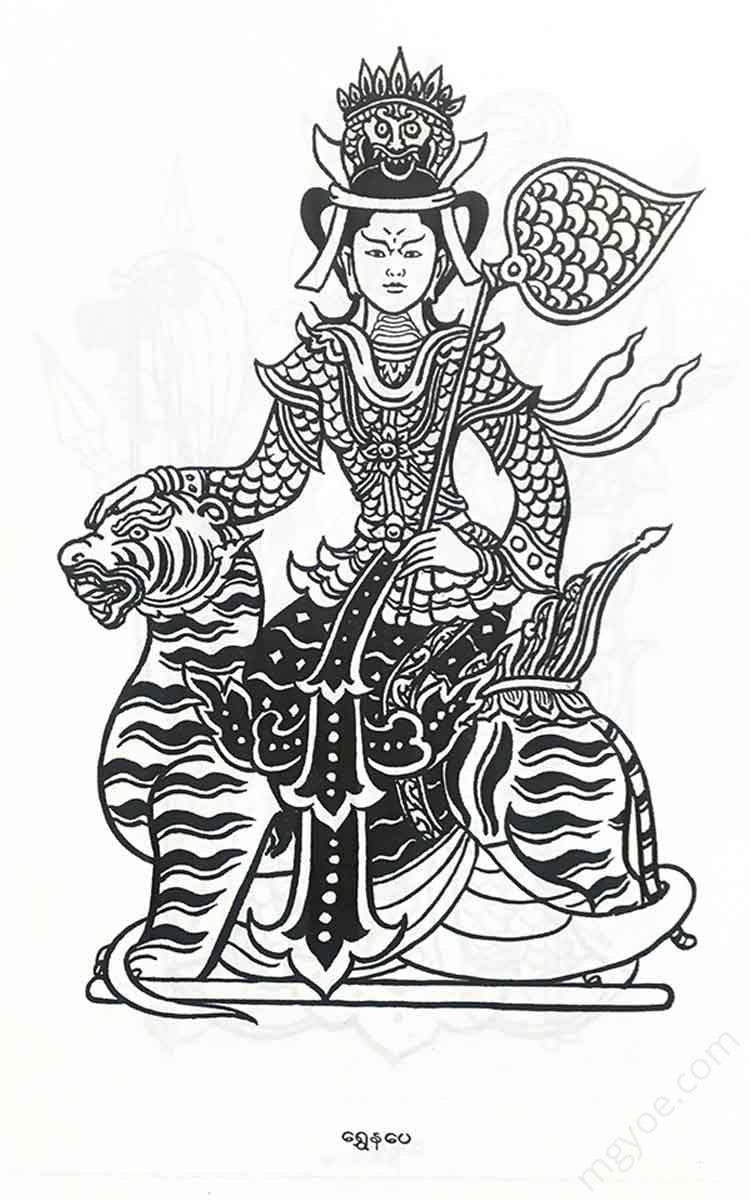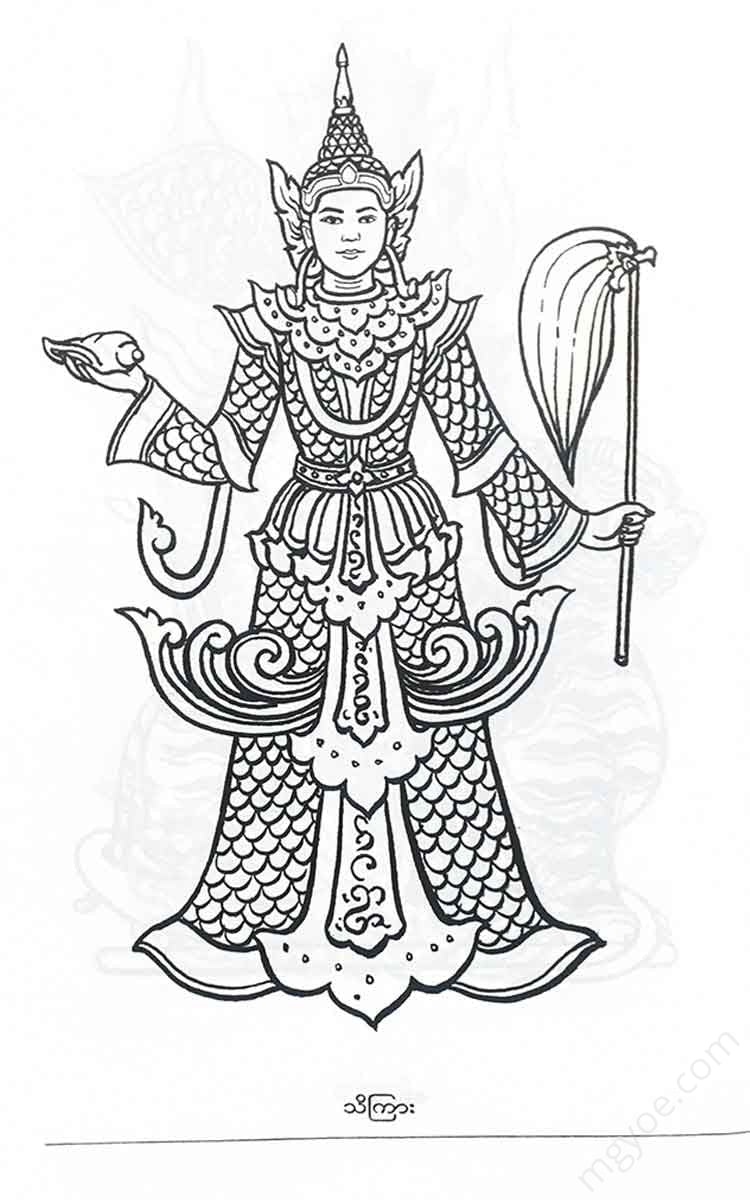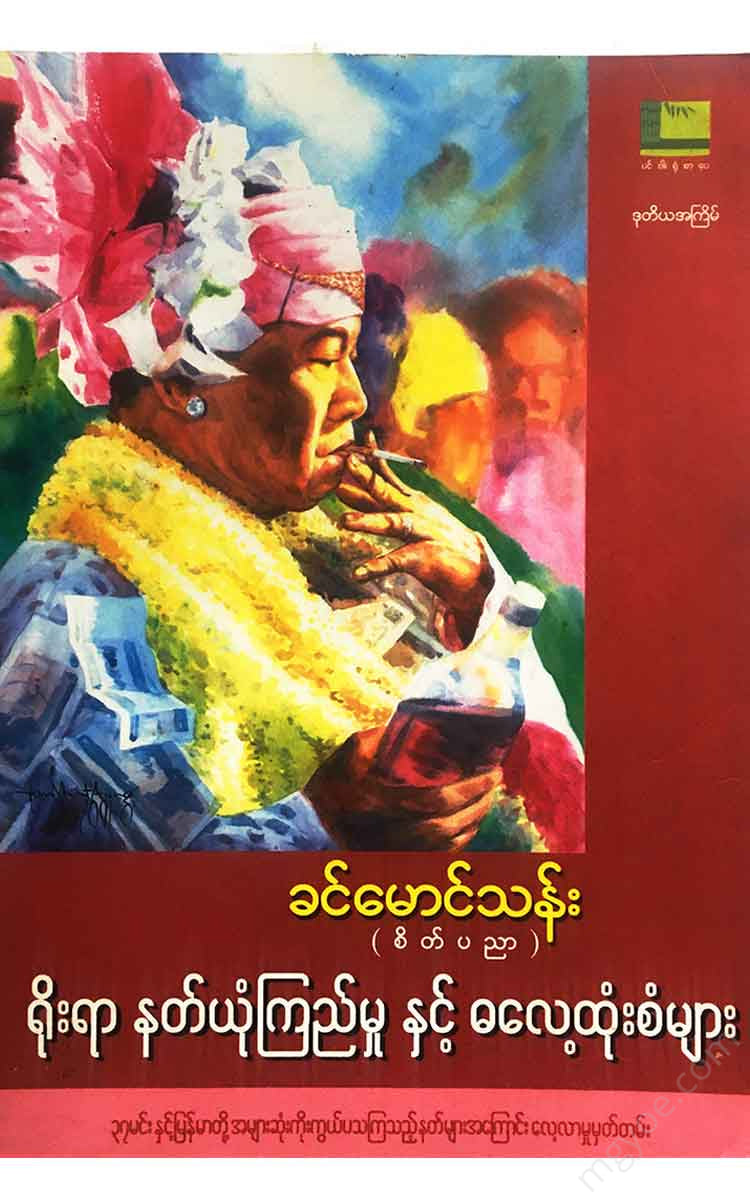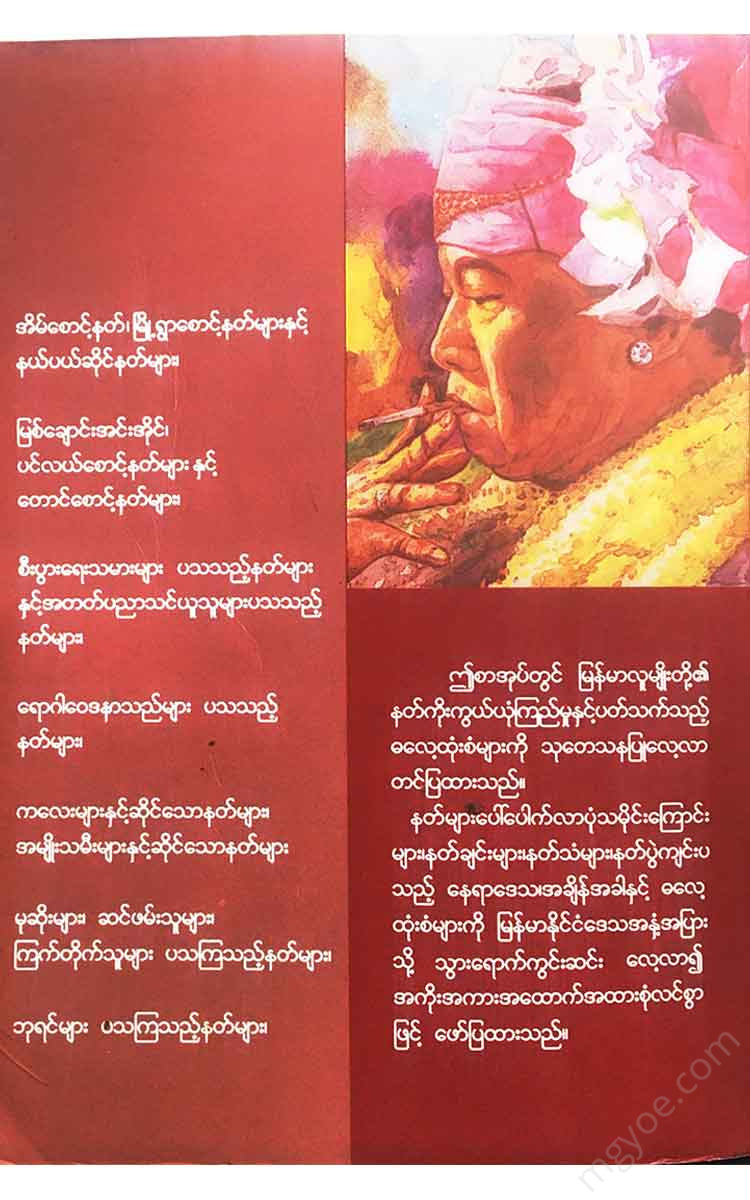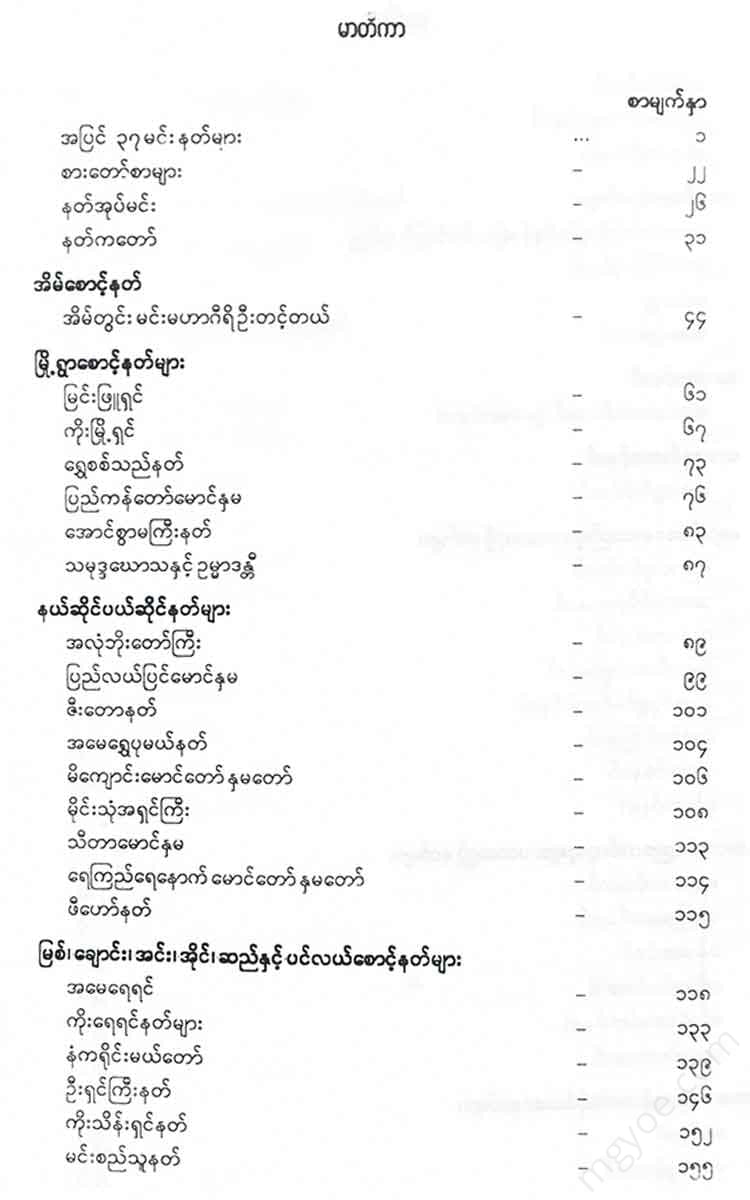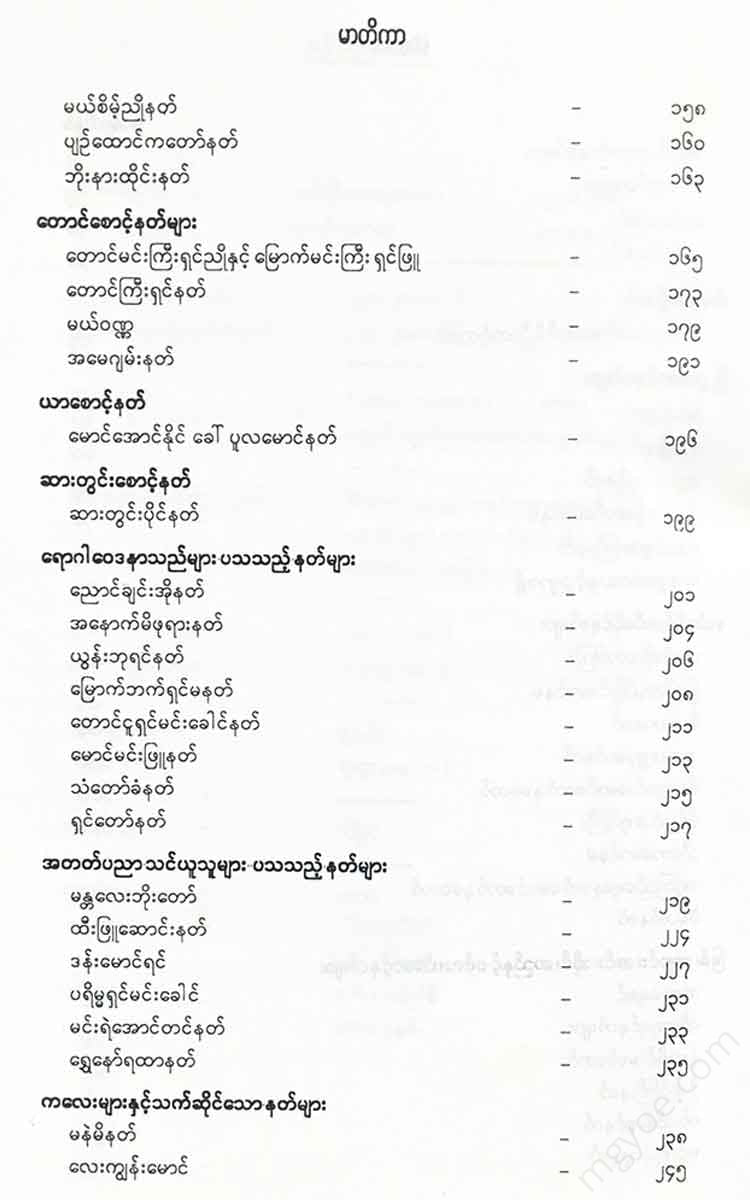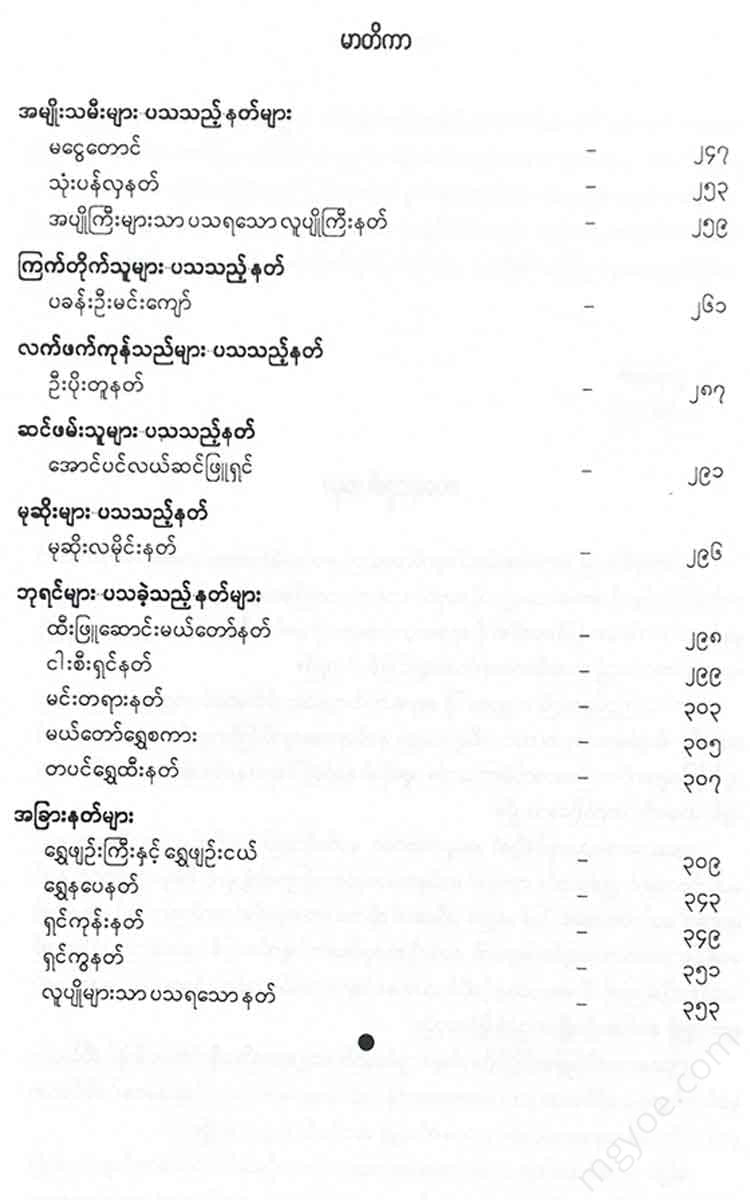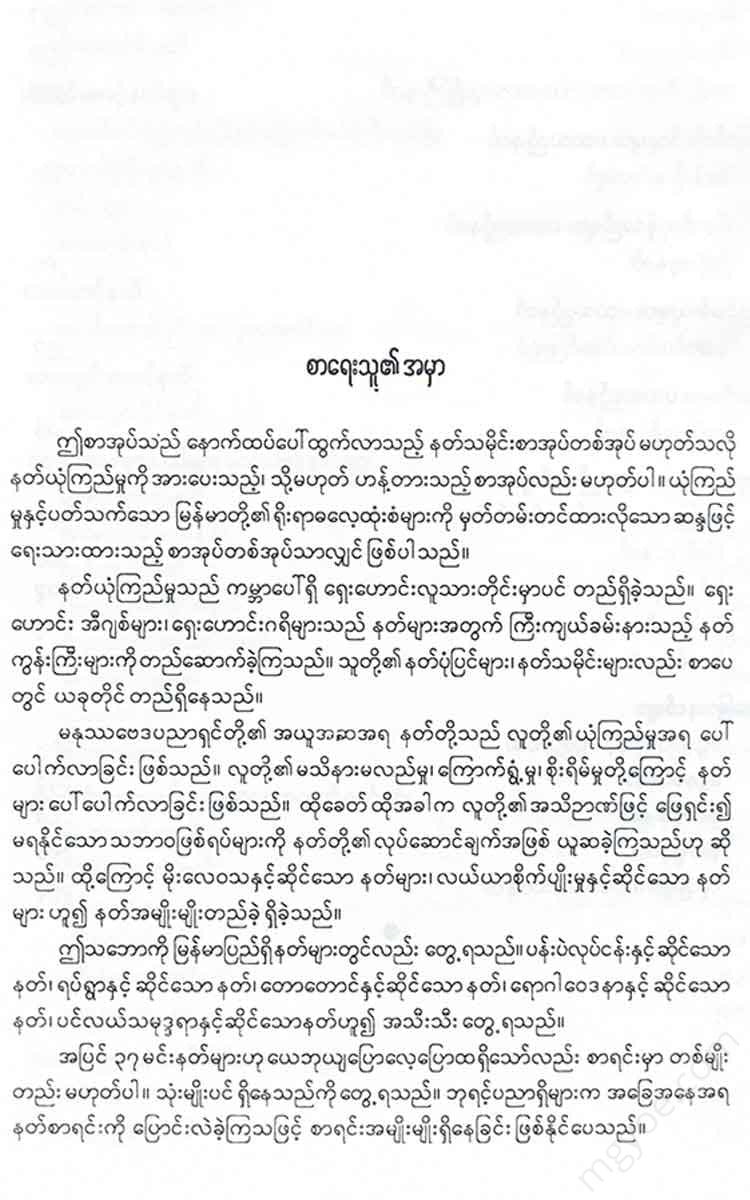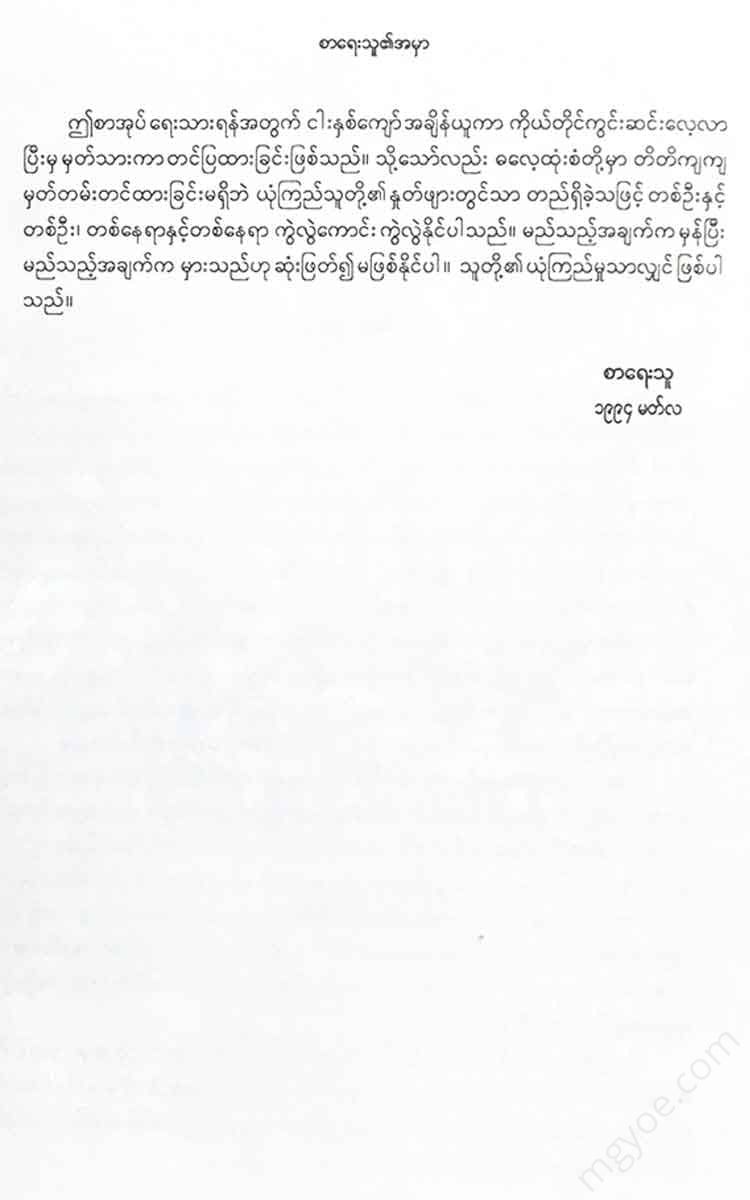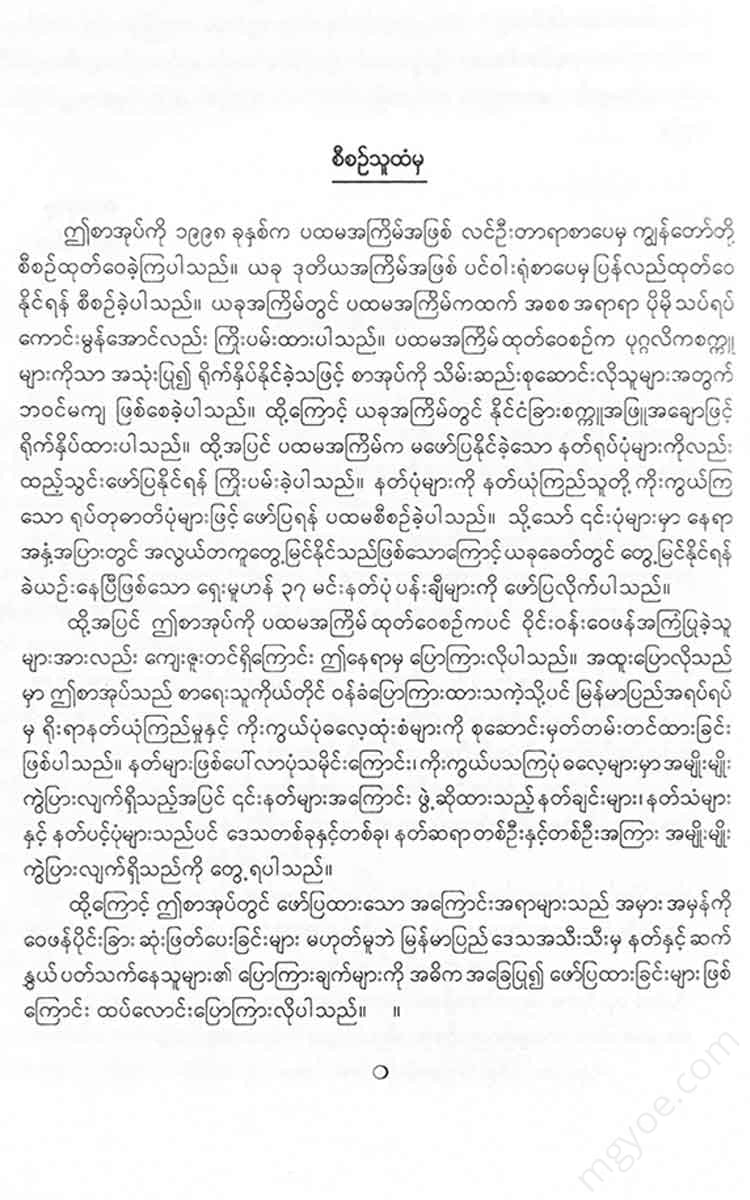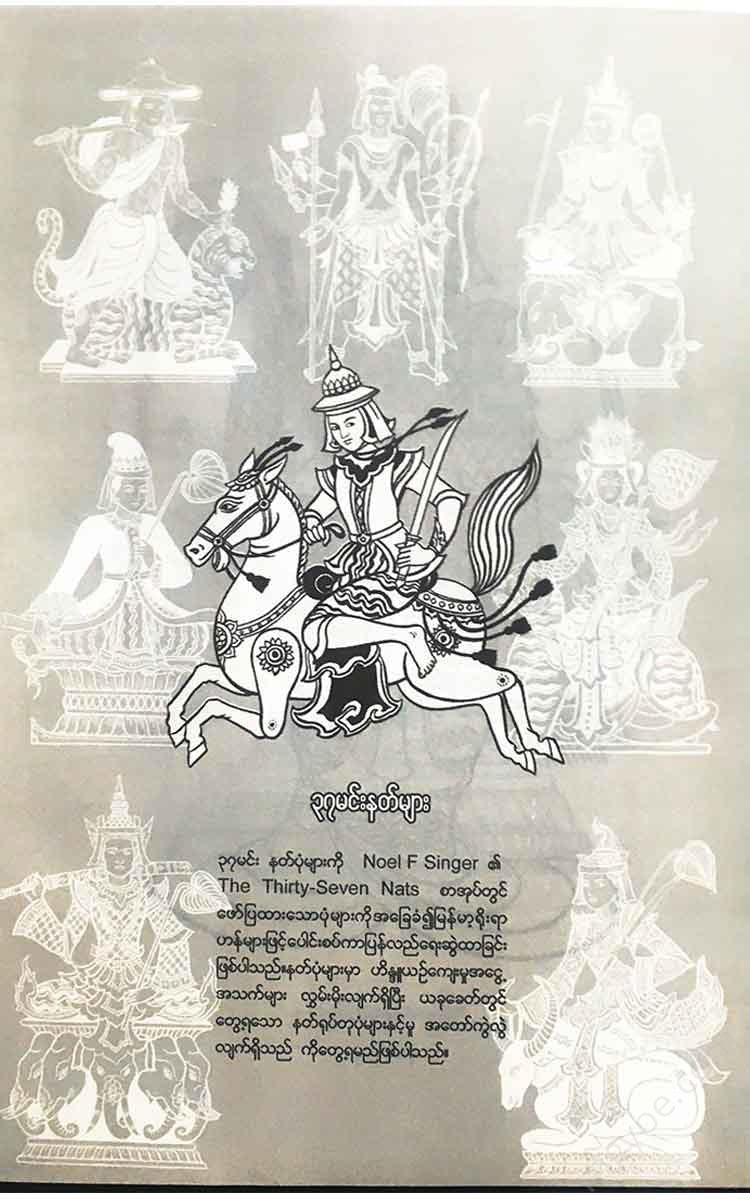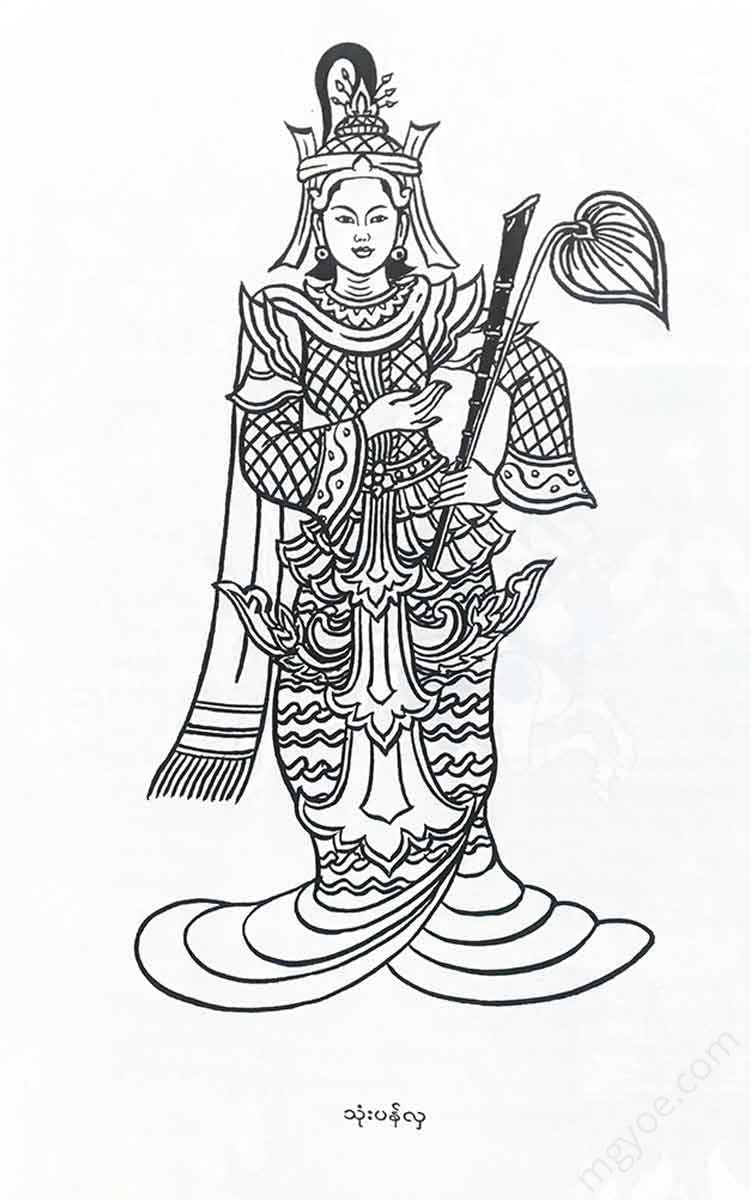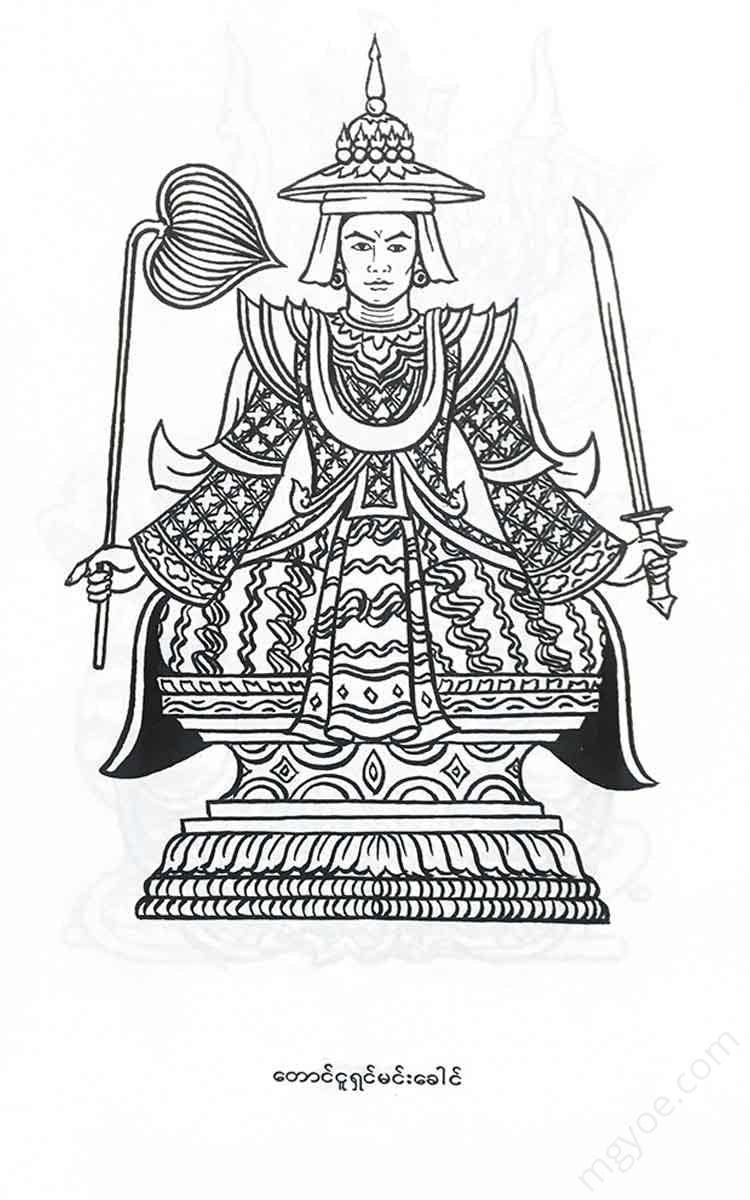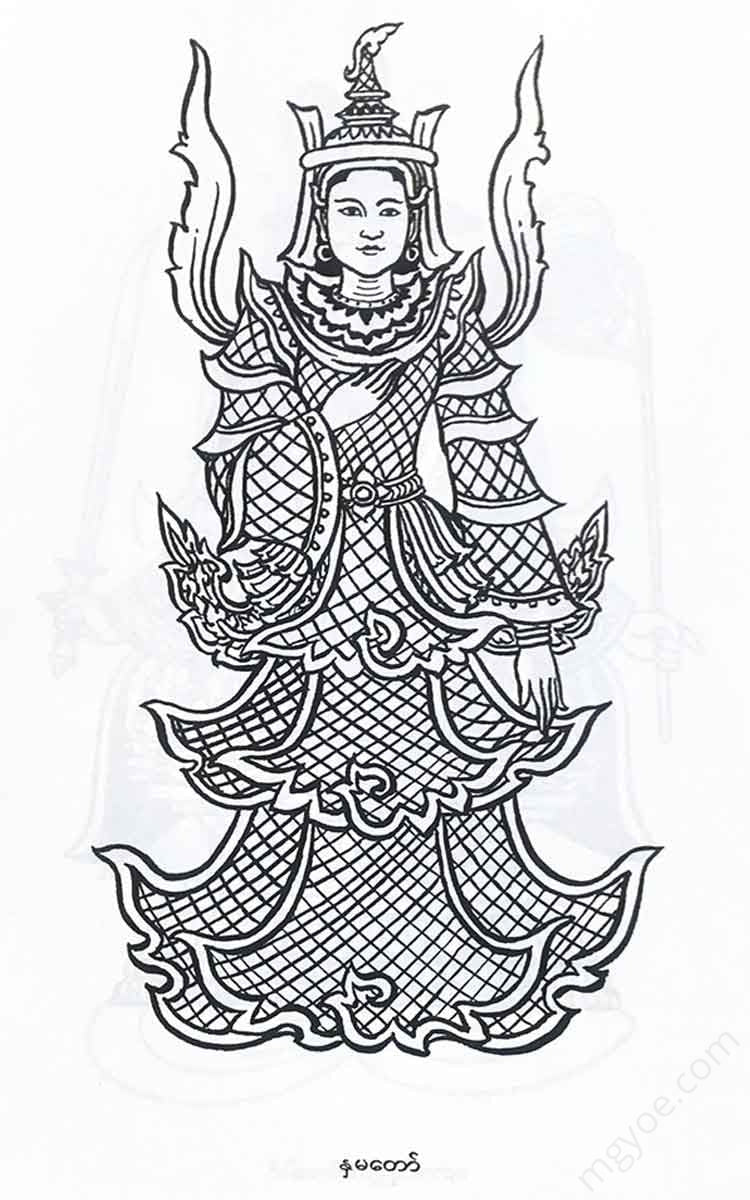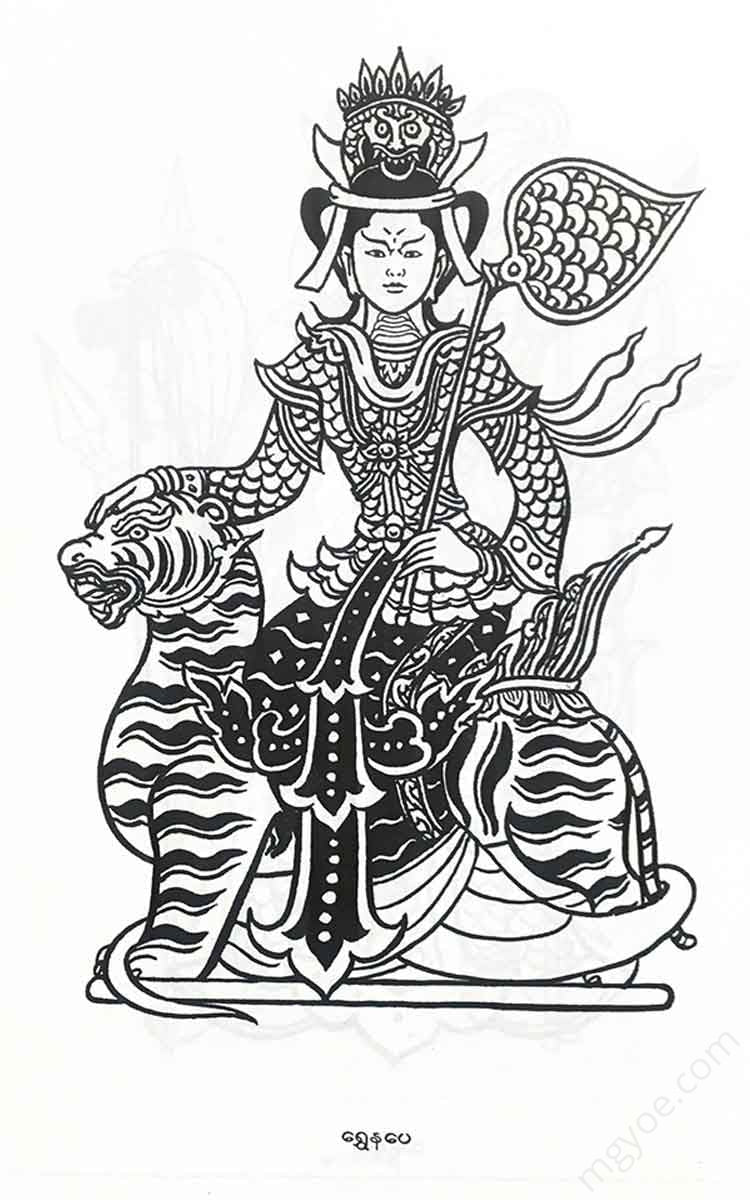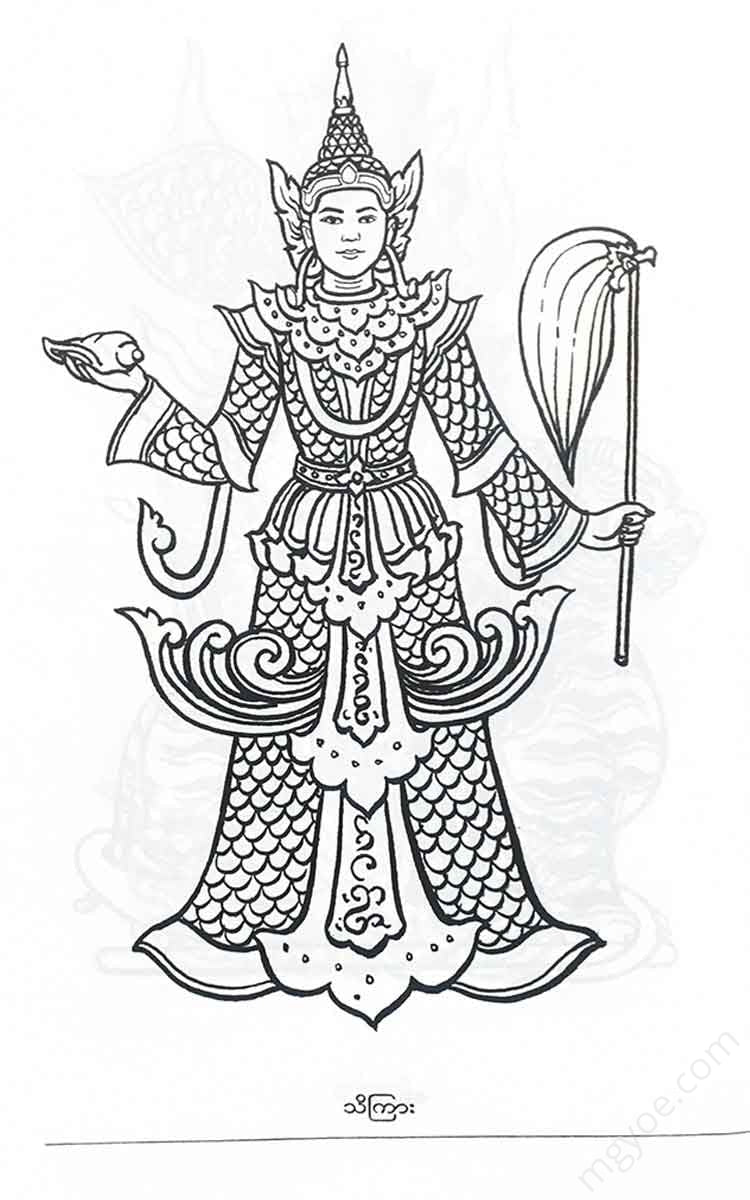Other Websites
Khin Maung Than - Traditional beliefs and customs
Khin Maung Than - Traditional beliefs and customs
Couldn't load pickup availability
Although the Burmese often say that there are 37 inner gods and 37 outer gods, it is very rare for anyone to know the complete names of these gods. If we include the list of gods found during the reign of King Pintale (164861), we see that there are four types of outer gods in the list of 37. However, the list of King Pintale does not have 37 gods, only 15. Only the lists of the Minister of the Peace Palace, the King of Myawaddy and the King of Mindon have 37 gods. Since the list of King Pintale does not have 37 gods, it is worth wondering whether the term "outer gods" had emerged at that time.
The Burmese people often say that there are 37 inner gods and 37 outer gods. The inner gods are the gods inside the walls of the Shwe Si Khon Pagoda, and the gods outside the walls are the gods outside the walls, and this has been traditionally accepted. If you visit the Shwe Si Khon Pagoda in Nyaung U, you will see that there is only one wall, and there is no inner wall or outer wall, so the above statement is worth considering.
Since there were only 15 deities in the list during the reign of King Pintale, it is also doubtful that the term "37 deities" appeared during the reign of King Anawrahta.
No one can say for sure that the deity statues inside the Shwe Si Khon Pagoda are from the Bagan period. Experts say that only one statue of the Buddha was made during that period. Statues similar to the deity statues inside the Shwe Si Khon Pagoda have been found in some shrines and temples in central Burma, so it is certain that they cannot be from the Bagan period. The earliest one seems to have been made during the reign of King Nyaung Ram and the reign of King Inwa.
There were only 15 gods in the list of Pintale Min, so the Minister of the Interior added 22 and wrote the list of gods. Since the list of 37 gods was completed many years before Pintale Min, the number of gods may have already been 37 at that time. It is possible that the term 37 gods had not yet appeared. From the list of Pintale Min, Mae Taw Shwe Sagar, Htee Phyu Saung, Maung Min Phyu, Yun Hu, Ko Lai Shin and Myin Phyu Shin were removed and 28 gods such as Thon Pan Hla, Shwe Phyu Gyi, Shwe Phyu Nge were added and 37 kinds of gods were written.
Myawaddy King U Sa (1766-1853) also composed a list of gods. In doing so, he removed some of the 37 gods and goddesses from the list of the Minister of the Interior and added new ones.
In 1859, King Mindon established the city of Yadanarbon (Mandalay) and appointed 37 other kings to serve as offerings to Bali. This list is different from other lists and contains discrepancies.
If we look at the complete list of 37 kings, we can see that there are only three. The current list of 37 kings, in addition to the one that is generally accepted, is the list of divine beings compiled by King Myawaddy.
Images of gods
The Burmese have been worshipping their traditional gods for a long time, but it is not until recently that they have carved statues of them. In Burmese villages, the White Horse is worshipped as the village guardian and village god, but there is no statue of the god. At the shrine, people offer offerings of their imagination to the White Horse. Flower pots and white horse figurines are the main items offered to the White Horse. Now, two statues are being worshipped: the Mauk To Saung Shwe Si Myin and the Pha Phon Lone Saung Hlaing Tae Myin.
The image of Maha Giri U Tint Ta and his sister Taunggyi Shin Nat, which was made by King Badon in 1785, has only the face and body. In the past, it was not common to make statues of Taunggyi Shin, but only the face was drawn on the body with gold ink. It is mentioned in the records as Shwe Zawa writing. Now, they have also made statues of Taunggyi Shin.
There are no statues of deities for the gods such as Min Khaung Gyi and Myo Tha Po Mying. Instead of statues, there is only a water bottle-shaped container made of lacquer called the Thetaw Aung Bu. The inside of the container is usually stuffed with cotton. Believers believe that the soul of the deity or the butterfly is inside the container. There are many deities without statues, but only the Thetaw Aung Bu. Originally, there was no statue at the Along Bo Dawgyi, and statues have only been made recently. The work of the statue is of modern art. Even for deities with statues like Ame Ye Rin, the worship of statues cannot have been very long. It is likely that it cannot be earlier than the Bagan period. Deity worship became more widespread during the Inva period. During that period, many deity groups and deity songs emerged. Therefore, most of the deity statues seem to have emerged during the Nyaung Ram and Inva periods.
The statues of gods made in ancient times were small and unattractive, and they lacked proportion. However, modern statues of gods are now human-sized and painted to look as graceful as princes and princesses.
In the making of deity statues, Yamana wood is usually used. If the deity is a noble, then Sak wood is used. Nowadays, they use the easily available Kyun wood. Yamana wood is preferred by sculptors and deity women because it is easy to handle and carve.
There are some mediums who easily buy ready-made images of deities, while others who can afford them have them made to order. On the day the image is made, they hold a dance party to appease the deities. They worship the deities.
Butterfly control
Before using the carved images of gods, they are anointed with the spirit of the gods to make them come alive. During the anointing of the spirit of the gods, the spirit of the gods performs a dance and a kanto ceremony.
When the capital of Mandalay was founded, tombs were built at the four corners of the city and statues of deities were cast to be placed in the tombs. Before the deity butterfly was placed, the guardian deities, the sun and moon, had to dance and play music.
To be laid out in the kana, 40 mats, 40 bamboo mats, 40 kambala carpets, 40 tinhteem, 10 green papyrus mats, and 10 kyayat tey are prepared.
To make the divine butterfly, four seven-thread cotton balls, 40 silver coins, 4 white lead coins, 4 assorted flowers, 4 candles, 4 incense sticks, a glass jar and four jars of nectar, four sets of food, 4 white cloths, 4 red cloths, 4 white linens, and 4 linen napkins are prepared.
The following mantra is recited when the divine butterfly is introduced.
Oh, gods and goddesses, do not follow the call of men.
The jeweled elephant and horse, the chief of the army,
If you don't come intentionally, then, oh
Nowadays, the butterfly ceremony is not so grand, it is just a ceremony where the priestess covers her own images with butterflies. The standard rituals that can be used for butterfly covering are described in the stories of the Shwe Pyin Nyi Naung, U Min Kyaw, and Ma Ngwe Taung spirits.
The gods and goddesses, the butterfly, the kanto, the kana wedding invitation
To you, O God, of great glory,
With my head bowed, I take refuge in the three jewels, the honor of my parents and teachers.
The divine king who protects the religion, along with the venerable Bodaw Thika,
The four elements, the eighty thousand arts, the ocean of victory with all the goddesses
Father, Mandala Lay Father, Kongthaman Father, Father of the White Horse
The King of the Rising Sun, the King of the Nine Cities, and his sister, Pearl Yin, the King of the Setting Sun
With the mother, the father, the mother, and the two sons, the mountain gods, and the
U Min Kyaw was the head of the family, and the traditional gods of the mother and father were the gods.
The traditional lords are the head of the temple, and 37 are the inner and 37 are the outer.
Offering all the celestial gods with complete offerings of divine gifts and offerings.
,Because of this, the shaman, east of the pagoda market in Mandalay, .....................
............... and the son of ....................................... came to visit.
Seven days ago, I placed my sons, daughters, and all my divine friends before your loving care.
You are respectfully invited.
Types of spirits
Dividing spirits based on their history does not reveal their true nature. Anthropologists have said that spirits arose out of human fear and ignorance, and that the nature of spirits would become clearer if they were categorized based on how they served human needs.
In addition, the 37 kings were not listed by the majority of the people, but were compiled by the wise men of the palace. Therefore, some notable figures among the people did not make it to the 37 kings, and some of the gods included in the 37 kings were not known to the people.
Mahagiri, Taunggyi Shin, Shin Phyu, and Shin Nyo are the guardian gods of the mountains. Mane Mi, Pyin U, Ma Thalay Kyaw, and Lay Kyun Maung are the child gods. Nyaung Chin O, North Shin Ma, and West Mi Pya are the gods that people who suffer from diseases rely on. Just as lepers pray to Nyaung Chin O for relief from their pain, women suffering from menstrual cramps pray to North Shin Ma and West Mi Pya.
Those who practice Vedic and Gatha mantras rely on the Mandalay Boda. Women who are obsessed with beauty worship the Three-winged God. King Aung Swar is the guardian god of the city, and Myin Phyu Shin is the village god of Burmese villages. U Poe Tu is trusted by tea traders, while Pashto Shin and Sin Phyu Shin are worshipped by royal elephant keepers. Those who want to learn the art of bowing worship the Paramma Shin Min Khaung, and Dan Maung Shin is worshipped by harpists.
Nowadays, the way people rely on spirits has changed. When buying or selling houses, land, or buildings, they pray to the deity of the house, the Mahagirin, to ensure a profit. They also rely on the deity when there is a problem with their property.
They believed that the two kings of the Taungpyung were the rightful rulers, so they would fight and fight to win in court matters. They would also fight the two kings of the Taungpyung when they were arrested or detained for any crime.
